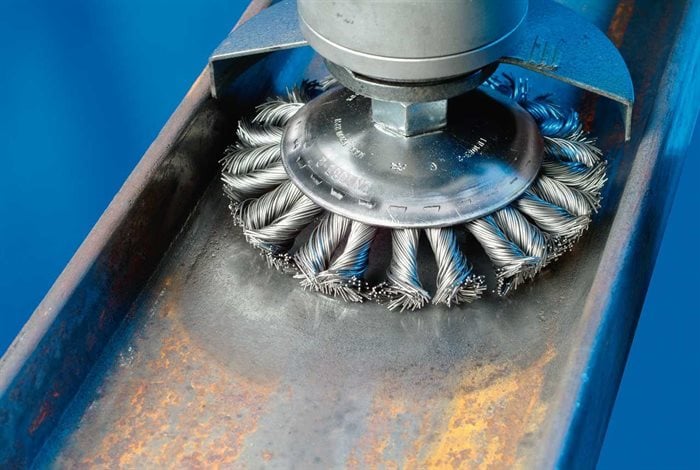Can SA's Steel Master Plan revitalise the local steel sector?
The World Steel Association has lowered its forecast for steel demand for 2022, anticipating that demand will have contracted by 2.3% this year as the global economy struggles with macroeconomic headwinds.

Source: PFERD-South Africa
South Africa’s steel industry has been under pressure for years as a result of a prolonged period of economic decline. Even prior to the Covid-19 pandemic, low domestic demand and a depressed global market were negatively impacting the local steel sector, leading to unprecedented job losses.
South Africa’s iron and steel industry was one of the main pillars of the local economy until as recently as two decades ago. The industry’s contribution to GDP has fallen significantly since the 2009 financial crisis, primarily as a result of cheaper imports, challenging trading conditions, high tariffs and insufficient local infrastructure investment.
Job losses
The Steel and Engineering Industries Federation of Southern Africa (Seifsa) estimates that between 2007 and the second quarter of 2019, the metals and engineering industry had shed around 49,000 jobs, of which 38,000 were in the metals sector. And since 2015, around 1,000 companies were liquidated and more than 300 companies put into business rescue when duties were imposed.
This state of affairs was exacerbated by the Covid-19 pandemic and lockdown restrictions which limited economic activity.
In 2021, a steel industry master plan was signed. The plan aims to revitalise South Africa’s struggling downstream steel industry. While some have welcomed the master plan, others argue that the plan prevents the industry from accessing cost-effective input materials which, in turn, makes it uncompetitive, one of its key failings.
Saving the steel industry
There is no question that saving a strategically important industry, like the steel industry, has merit. A competitive downstream steel industry would have a number of multiplier benefits for the economy. Any strategies to revitalise the industry must prioritise and ensure the industry’s overall long-term competitiveness. This inevitably requires scrapping import duties on steel that will be beneficiated locally to ensure a more stable and competitive local market.
Given a subdued local economy and the likelihood that any infrastructure roll out will be limited, local steel businesses need to be pursuing export opportunities if they hope to grow.
Local steel companies argue if they are to be sustainable, then the only way they can create a strong export market for locally produced steel products is if they are able to procure raw materials at a competitive price from the international market.
Global recovery predicted for 2023
Encouragingly, the World Steel Association expects that demand for steel globally will start recovering in 2023, growing by an expected 1%. South Africa’s steel sector needs to ensure that it is competitively positioned if it hopes to benefit from this upturn.
To ensure that it is competitive, the industry also needs to focus on addressing energy constraints, efficiency improvement, human capital as well as skills development. As far as the latter is concerned, PFERD-South Africa are coming to the party, establishing a training academy that provides free training to operators of abrasive equipment.
The PFERDAcademy addresses challenges such as operator fatigue, incorrect tool handling, material cross-contamination, consumable and machine incompatibility as well as non-adherence to labelled guidelines. It believes the training plays an important role in optimising operational efficiency because companies then benefit from reduced equipment bills as it requires less frequent replacing. Safe work practices reduce injuries, leading to reduced operator downtime and ultimately increasing productivity.
About the author
Dennis Phillips, national sales manager, PFERD-South Africa
